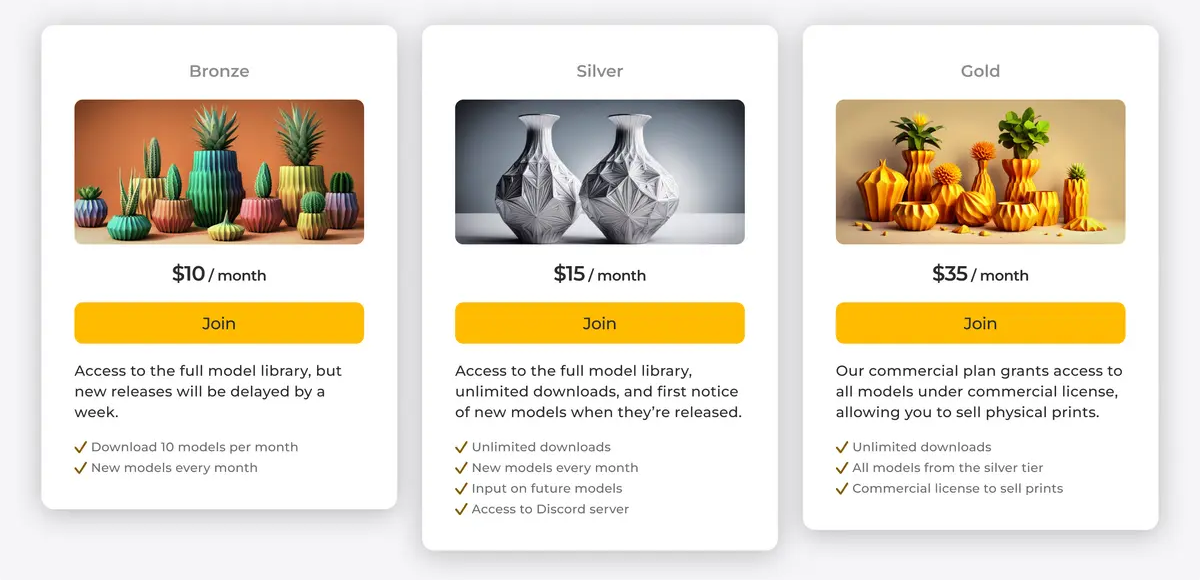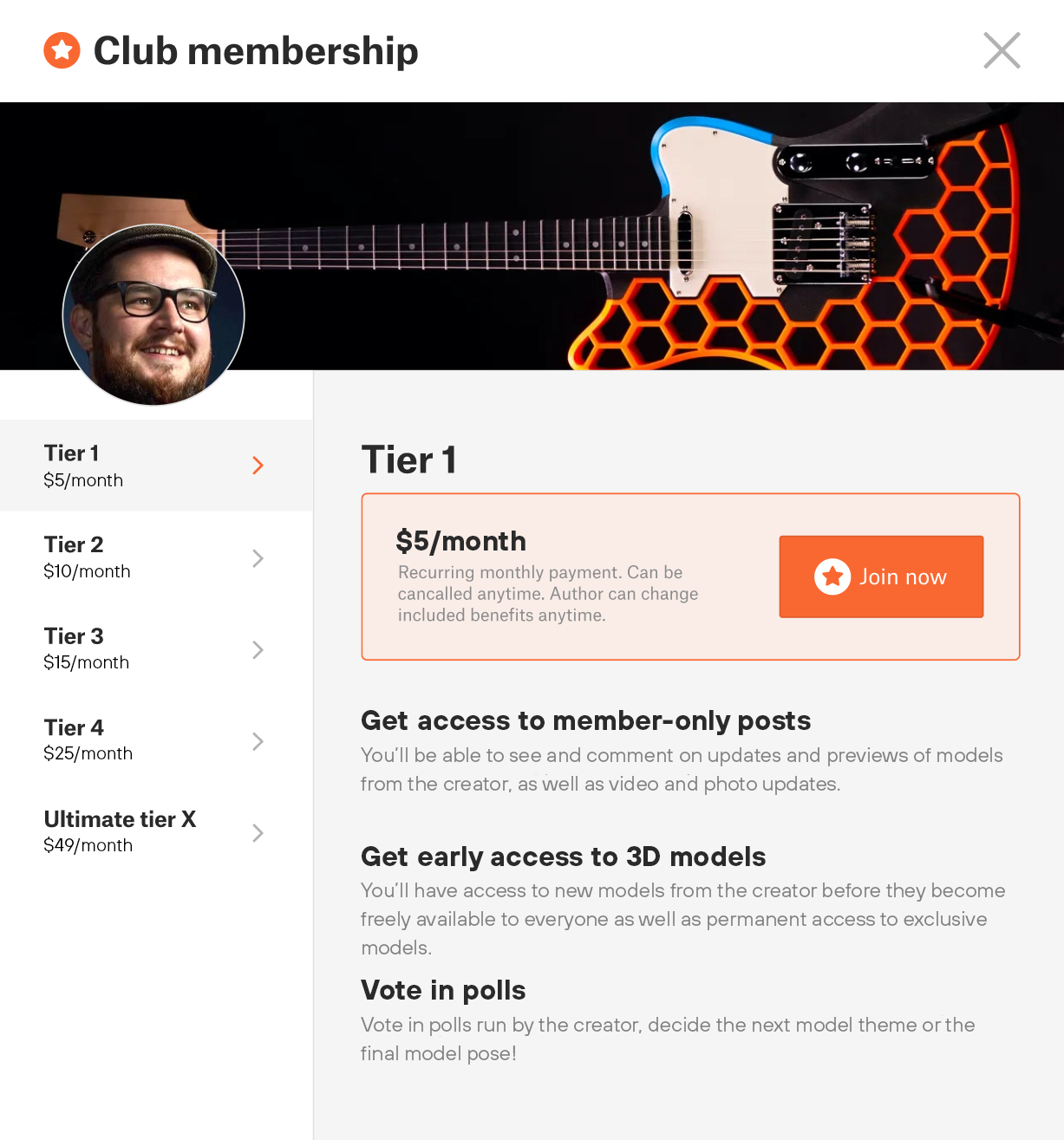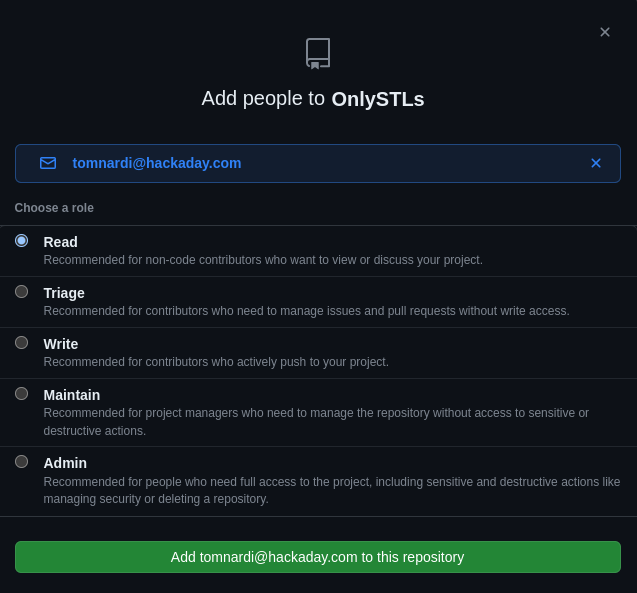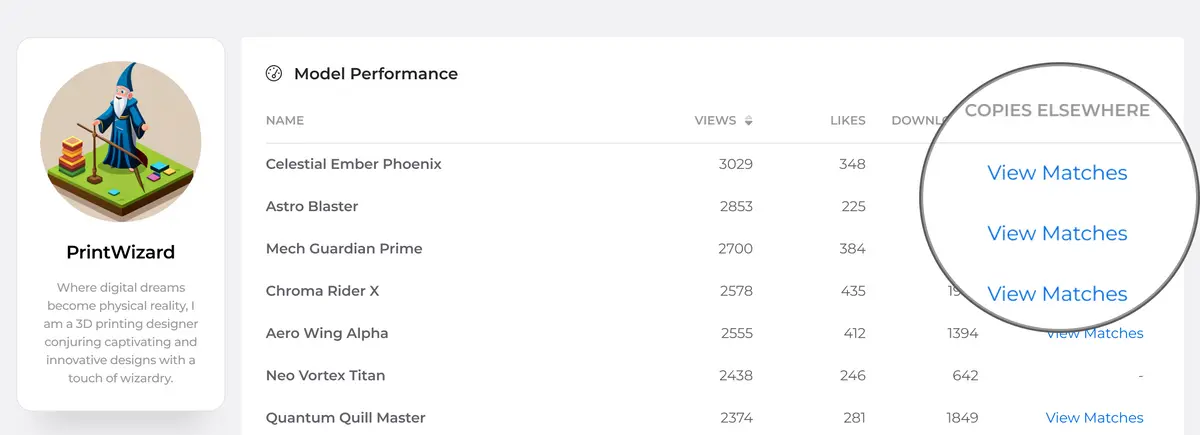3D Model Subscriptions are Coming, But Who’s Buying?
Posted by admin on

We’ve all been there before — you need some 3D printable design that you figure must be common enough that somebody has already designed it, so you point your browser to Thingiverse or Printables, and in a few minutes you’ve got STL in hand and are ready to slice and print. If the design worked for you, perhaps you’ll go back and post an image of your print and leave a word of thanks to the designer.
Afterwards, you’ll probably never give that person a second thought for the rest of your life. Within a day or two, there’s a good chance you won’t even remember their username. It’s why most of the model sharing sites will present you with a list of your recently downloaded models when you want to upload a picture of your print, otherwise there’s a good chance you wouldn’t be able to find the thing.
Now if you really liked the model, you might go as far as following the designer. But even then, there would likely be some extenuating circumstances. After all, even the most expertly designed widget is still just a widget, and the chances of that person creating another one that you’d also happen to need seems exceedingly slim. Most of the interactions on these model sharing sites are like two ships passing in the night; it so happened that you and the creator had similar enough needs that you could both use the same printable object, but there’s no telling if you’ll ever cross paths with them again.
Which is why the recent announcements, dropped just hours from each other, that both Thangs and Printables would be rolling out paid subscription services seems so odd. Both sites claim that not only is there a demand for a service that would allow users to pay designers monthly for their designs, but that existing services such as Patreon are unable to meet the unique challenges involved.
Both sites say they have the solution, and can help creators turn their passion for 3D design into a regular revenue stream — as long as they get their piece of the action, that is.
Supply and Demand
The idea of offering paid subscriptions for an individual’s content is of course nothing new. As previously mentioned, Patreon is already an option used by creators as a way for their followers to support them financially. In return, they get perks like early access to new content or direct one-on-one contact with the creator themselves. If you’re willing to support them at a high enough monthly level, there’s often the opportunity to have custom work commissioned. Perhaps the most notorious of these services is OnlyFans, which has become the unofficial home of bespoke adult content that can only be unlocked via monthly tithing.
 With such services, there’s a clear expectation of continual content. Whether it’s early access to a YouTube video about retrocomputing or high-res images of a scantily-clad photo shoot, there’s an implicit guarantee that your monthly support grants you access to a regular flow of something that’s interesting or desirable. It’s simple economics — they have something people want, and customers are willing to pay regularly for it.
With such services, there’s a clear expectation of continual content. Whether it’s early access to a YouTube video about retrocomputing or high-res images of a scantily-clad photo shoot, there’s an implicit guarantee that your monthly support grants you access to a regular flow of something that’s interesting or desirable. It’s simple economics — they have something people want, and customers are willing to pay regularly for it.
But how that fits in with 3D printing is a bit less clear. As most of us have come to realize by now, desktop 3D printing is best suited to producing highly customized one-off objects. Sure there are occasions where a group of people will serendipitously require the same object, say a holder for a particular tool, which is why model sharing sites were established in the first place. But that’s still just a one time exchange.
What about the next month, or the month after that? What could that same designer offer you that would keep your interest over the long term, much less be worth the cost of admission?
Experience tells us that, for the most part, the most important and valuable objects you’ll ever print on your desktop machine will have two things in common: you’ll design it yourself, and you probably won’t even know it was something you needed beforehand.
Technical Difficulties
Being Hackaday, we’ve thus far approached this from a practical standpoint. In this community we largely use 3D printing as a tool to build personal projects that may or may not be of use to anyone else. In such an environment, the monthly subscription model is a tough sell. But to be fair, some are more interested in the artistic applications of the technology.
In that case, perhaps you do have a favorite 3D artist, and you’d be willing to pay every month to get access to their latest piece. We could certainly see somebody putting out a few dollars a month to get access to models like wargaming miniatures or busts of celebrities or historical figures — in other words, streams of printable objects that could remain fresh and exciting for months or even years to come.
 But even in that case, it’s difficult to see why we need a dedicated subscription service…much less two of them. In the announcements about their respective services, Thangs and Printables both cited the challenges of managing users and content downloads. The Printables blog post specifically points to Patreon’s lack of file hosing, and goes on to explain how creators are left to figure out how to securely provide their models to supporters.
But even in that case, it’s difficult to see why we need a dedicated subscription service…much less two of them. In the announcements about their respective services, Thangs and Printables both cited the challenges of managing users and content downloads. The Printables blog post specifically points to Patreon’s lack of file hosing, and goes on to explain how creators are left to figure out how to securely provide their models to supporters.
It goes as far as to say that, in some cases, dealing with the logistics of this consumes more time than it takes to create the pieces being shared in the first place.
That’s a claim we’re skeptical of, to put it mildly. This isn’t the 1990s, and file hosting is hardly difficult to come by. For example, GitHub offers granular repository permissions that would allow you to create a private repository that only invited users could view and comment on.
We’d also point out that, due to the lack of any DRM on STL files, there’s no way to actually limit who can use them once they’ve been downloaded. So even if you did come up with an elaborate authentication system to make sure only paying customers got access to your latest model, nothing except their conscience would stop one of them from immediately re-uploading it to another model hosting site for free and making the whole endeavour moot.
Suffering from Success
To that end, at least Thangs says they have a plan in place. Using their 3D search engine technology, the service will be able to “notify creators if content from paid membership plans has been publicly shared without permission on a number of third party platforms.” What the creator is supposed to do with said information is, unfortunately, a bit less clear.
Those who’ve been involved with desktop 3D printing for awhile will likely remember the saga of Aria the Dragon. When it was discovered that somebody on eBay was printing and selling the Creative Commons licensed model without any attribution to creator Louise Driggers, it triggered a huge debate about the nature of 3D printed art. The seller argued that Louise gave up her rights by putting the model online, and if it wasn’t for the negative press coverage the situation garnered, it’s not clear eBay or Thingiverse would have bothered to get involved.
When a creator finds one of their subscription models is being offered for free somewhere else, will they have to make as much noise as Louise did to get results? Or will Thangs put on the necessary pressure to make sure that these models are removed from rival services in a timely manner? Unfortunately, we probably won’t know the answer until somebody has their work copied out from under them.
There’s Gold in Them STLs
Let’s be clear, creators should absolutely have the tools necessary to charge for their 3D models if they wish, and we’d love to see people earning a living doing so. But creating two competing monthly subscription services just seems like a lot of wasted effort, especially for a problem that seems like it’s already been largely solved. Sites like Cults3D and cgtrader have allowed creators to sell their models for years, no subscription required. If you like a particular model, you can simply buy it like any other piece of digital content.

But ultimately, whether the 3D printing subscription services actually take off depends on the community. So what do the good readers of Hackaday think? Is this the kind of monetary incentive creators need to produce the next generation of printable models, or will it be looked back on as yet another misguided attempt to cash in on the hype surrounding a technology that seems perfectly content with teetering on the edge of mainstream adoption?

